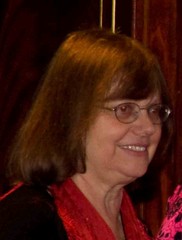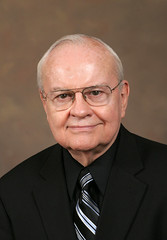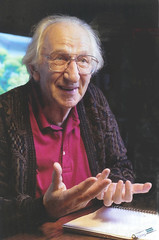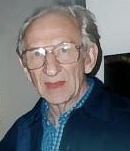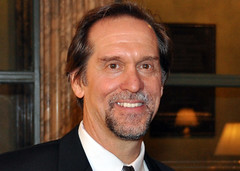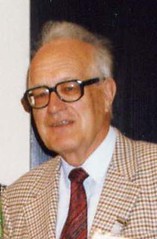Five International Models of Music Therapy Practice
Introduction
By Barbara L. Wheeler
One of the special features of the 1999 World Congress in Washington, DC, was a series that presented “Five International Models of Music Therapy Practice.” As Ken Aigen says in his “Memories of the Ninth World Congress of Music Therapy” in this issue of Voices:
My idea was to bring special attention to the models of Analytical Music Therapy (AMT), Guided Imagery and Music (GIM), and Nordoff-Robbins Music Therapy (NRMT), and to have the founders of each of these approaches attend the Congress and offer a special presentation together. Political considerations led to the expansion of the original focus to “Five International Models of Music Therapy” with Behavioral Music Therapy (BehMT) and Benenzon Music Therapy (BenMT) being added to the original three models.
Kenneth Bruscia coordinated this special track, which included special pre-congress courses, a plenary session, and many session and panels. Ken Bruscia’s correspondence to those who he asked to help in planning these sessions is included here. The people who presented at the plenary session were:
- Rolando Benenzon (Benenzon Music Therapy),
- Helen Bonny (Guided Imagery and Music),
- Clifford Madsen (Behavioral Music Therapy), and
- Clive Robbins (Nordoff-Robbins Music Therapy).
- Johannes Th. Eschen represented Mary Priestley (Analytical Music Therapy), who could not attend.
Ken Bruscia has also shared a listing of those who he invited to present at some of the courses and panels, although in a few cases, these were not the people who ultimately were able to present.
I am pleased that we are able to share some memories and additional materials from people who were involved with these models. Gabriela Wagner who coordinated the presentation of the Benenzon Model of Music Therapy shares her memories from preparations and presentation. Lisa Summer, who worked closely with Helen Bonny and was one of the presenters at the conference, writes about her memories of this track. Clifford Madsen shares his memories as well as the talk that he gave at the plenary session on Behavioral Music Therapy. In addition to some memories from Clive Robbins, Alan Turry, who worked closely with Clive Robbins and presented at the conference, shares some memories of the Nordoff-Robbins track. Johannes Th.Eschen has kindly shared materials from his books, Analytical Music Therapy (2002) and Anfängen der Musiktherapie in Deutschland, Part VII (2010), which express what he would like to share about the AMT track.
Reflections on the Benenzon Model of Music Therapy Track
By Gabriela Wagner
Dr. Benenzon invited me to coordinate the presentation of what since then, is know as Benenzon Model of Music Therapy. I had the great pleasure of working with him directly as well as with the representatives of the different areas in different countries. Emerenziana D'Ulises, Giuanluigi Di Franco, (Italy) Cleo Correia, Marta Negreiros, Lia Rejane Mendes Barcellos (Brasil), Francisco Blaco Velcher(Spain), Liliana D'Asero, Ofelia Herrendorf and myself Gabriela Wagner (Argentina), were working with Rolando Benenzon during the preceding year in order to clarify ideas and to discussing different items. During that year I made a review of Dr. Benenzon's published work between 1962 and 1999. Finally, I was in charge of different presentations. Dr. Benenzon’s speech at the conference is reproduced here (pdf 4MB).
Unfortunately not all of the mentioned persons finally could make it to Washington, but the previous work was a wonderful experience. The experience of participating in this track will be an unforgettable one for me. I had the chance and the pleasure in Washington to compare, to look for coincidence and differences among the above mentioned models. One of these presentations was my work with an autistic patient which included my cello when she was 5 and 6 years old and later when she was 26. It was an incredible experience of non verbal memory where music was the only symbolic bound.
Other interesting impressions were those dealing with being a WFMT Council Member, but that is for another opportunity.
Reflections on the Bonny Method of Guided Imagery and Music (GIM) Track
By Lisa Summer
Reflections on the GIM track at the 1999 World Congress of Music Therapy brings me immediately, and joyfully, to recollections of Helen Bonny. Towards the end of Helen Bonny’s life in 2010, she often spoke with me about the development of GIM practice and research around the world. One of her happiest memories was the excitement of speaking at the “Founders Panel” at the 1999 World Congress and she had a strong memory of listening to the other panelists each representing their model. At that keynote presentation, I remember clearly that Helen spoke in such a calm manner yet with such enthusiasm and intense presence about GIM (as she always did).
I gave the next presentation, a 2-hour Introduction to the Bonny Method of GIM, and I remember clearly the enthusiasm of the audience. There was a sense of heightened enthusiasm because of the structure of the conference. There was a feeling of passing the baton to the next speaker in your track as, for example, I passed the baton Madelaine Ventre, MA, MT-BC (USA) who presented 2 experiential sessions on the Bonny Method of GIM. After these introductory sessions the baton was passed to presenters on the research panels. Bjorn Wrangsjo, MD (Sweden) and Cathy McKinny, PhD, MT-BC (USA) represented the Bonny Method for the Panel on Quantitative Research and Denise Grocke (Australia) represented the Bonny Method for the Panel on Qualitative Research. Next came two specialty panels: Frances Goldberg, MFCC, MT-BC (USA) shared her holographic theory of GIM for the Panel on Clinical Theory and Carolyn Sonnen (USA) shared how classical music is utilized in GIM for the Panel on the Role of Music. The four panels on clinical applications were represented by James Borling, MM, MT-BC (USA) for Adult Applications, Susan Wesley, PhD (USA) for Verbal Children/Adolescents, Ginger Clarkson, MA, MT-BC (USA) for Nonverbal Clients and Roseann Kasayka, DA, MT-BC (USA) for Medicine. Finally, Sierra Stokes Stearns, PhD, MT-BC (USA) presented the paradigm of GIM training for the Panel on Training.
It is interesting to note that the majority of presenters from the GIM track at this World Congress were Americans, and this was because the majority of GIM Fellows were Americans. In the last decade, GIM has truly grown into an international model: currently the majority – 63% - of GIM Fellows are from around the globe; 37% are Americans (Association for Music and Imagery, 2010). In fact, GIM has proliferated so strongly in Europe that in 2008 the European Network for Guided Imagery and Music (ENGIM) was formed to support its development. For further information about the Bonny Method contact www.ami-bonnymethod.org and for a collection of articles on Helen Bonny, and the history, theory, research, and clinical applications of the Bonny Method see the Voices issue commemorating Helen Bonny’s work and life at www.voices.no [Voices, Volume 10(3), Co-edited by Lisa Summer and Carolyn Kenny].
Reflections on the Behavioral Music Therapy Track
By Clifford K. Madsen
I am pleased to add my remembrances for the 1999 event. I remember it very fondly especially the wonderful personal interactions that the five of us had one-on-one during the course of the conference. I guess that the most important think I remember is in giving the presentation, sensing the “audience tone” throughout my time and listening to the other four presenters. Of course, I knew of each individual’s work but getting to interact in a personal way was very special.
Also, having been given the task of assembling this “approach” I remember working extremely hard to provide the best possible representation of the approach I could. After a good deal of thought I decided to organize it with the following people participating. All of them were absolutely wonderful in bringing the various aspects of this approach to the conference and making it “live” through various talks and presentations and interactive discussions.
Every time I think about that conference it makes me smile. Indeed, it was one of the most memorable experiences of my professional life.
I’ve attached both my speech (pdf 147 KB) and the list of presenters (below) that were kind enough to help in elucidating this approach.
| ORIGIN AND DEVELOPMENT: | Clifford K. Madsen |
| INTRODUCTION: | Anita Louise Steele & Lori Lundeen Smith |
| EXPERIENTAL WORKSHOP: | Russell Hilliard |
| CASE STUDY: | Mary Boyle |
| RESEARCH: | Quantitative research, Jayne Standley |
| RESEARCH: | Qualitative research, Suzanne Hanser |
| TRAINING: | Carol Prickett & Dianne Gregory |
| ROUNDTABLE DISCUSSIONS: | Comparing models with regard to clinical theory, Judith Jellison & MaryAnn Nolteriek |
| ROUNDTABLE DISCUSSIONS: | Comparing models on the use of music, Mary Ann Nolteriek & Judith Jellison |
| CLINICAL APPLICATIONS: |
|
Reflections on the Nordoff-Robbins Model of Music Therapy Track
It was a “whole new level of experience – was very gratifying.” He felt that this was the first world congress that truly deserved the title “world congress” because there were so many people from Asia, representing a very wide scope. Washington, DC, truly was the center of the world. He made special connections with the Koreans, with whom he later had more contact. These were very important connections.
Clive spoke of what fun it was when, after they had spoken, Helen Bonny said, “Wasn’t it fun to get up there and tell people about the work and have it accepted?”
He said,
“I was pleased – it took me by surprise in some ways….. was relaxed.” He was enjoying himself so much that he was surprised when he saw a sign saying that he had 5 minutes left to speak.
Cliff Madsen also spoke on the panel. Later, Clive and Cliff became very friendly. They would greet each other warmly at conferences.
Clive was very pleased with the conference. Japan was well-represented. He thought that Kana Okazaki-Sakaue met her husband there. (According to Kana, she and Masami [now her husband] actually knew each other before 1999 but they became closer as a result of the congress, as she translated for him.)
By Alan Turry
I remember being moved by the sincerity of each pioneer representing their models, and the mutual respect that was apparent, despite concerns of competition or hierarchy. I sensed that having such a wide variety of models was another step in legitimizing approaches that were both music centered and psychodynamic, approaches that necessarily at times need to rely on tacit rather than explicit knowledge. I also remember that during my experiential workshop we had some healthy debate on what exactly constitutes particular idioms or styles, and I learned a great deal from the participants.
Analytical Music Therapy
By Johannes Th. Eschen
After having waited patiently for "the right moment" we are full of awe and wonder when a psyche is creating a really great dream or improvisation with incredible depth and clarity.
Striking for us is the power and delicacy of the signs of hope, induced by the inborn healing capacity even of very ill patients.
The humble respect of the unique potentials of just this patient, just his psyche with his personal biography is growing from therapy to therapy.
Patients, students and therapists are again and again amazed and fascinated by the "works of art", the "compositions" they have created in associative improvisations.
Even musicians with a long fruitful experience of a creative life, admire, deeply moved, the inner creating capacities, quite often miles ahead of the conscious possibilities, and enjoy the sparkling richness, vivid intensity, strength and delicacy of feelings, the clarity of forms and developments in associative improvisations.
This is for me a steadily growing beloved special field full of rich and impressive experiences withMusic in the life of man.
(From unpublished manuscript for
New York Symposium "Music in the life of man" 1982,
invitation by Barbara Hesser)

